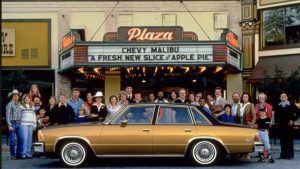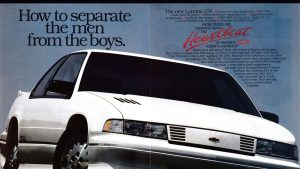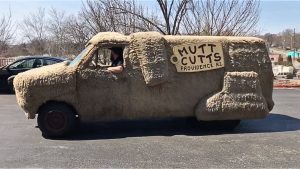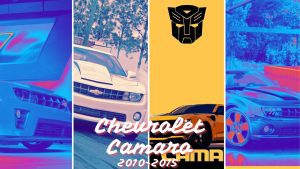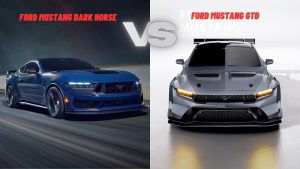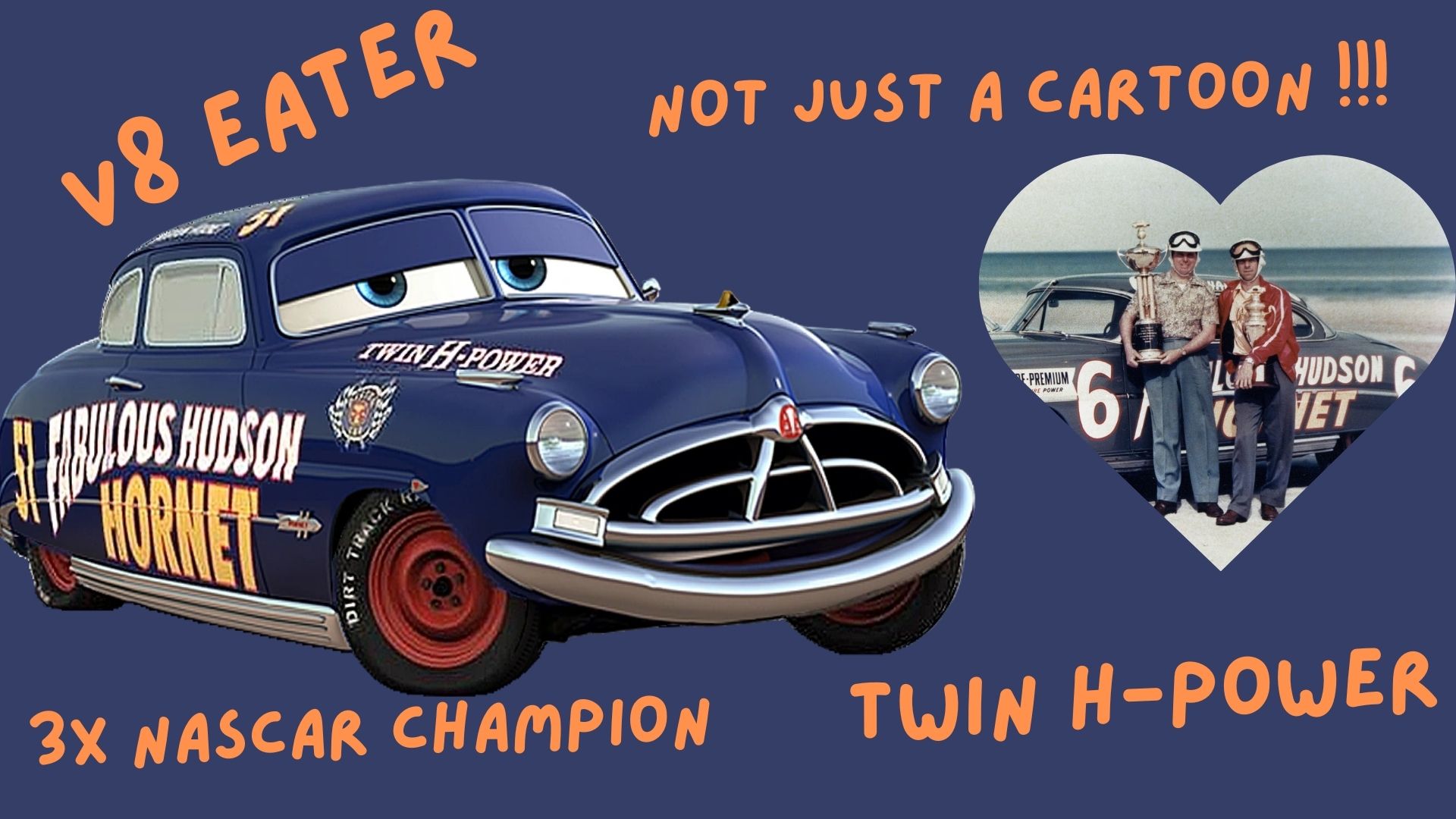
Table of Contents
Hudson took a “STEP-DOWN” to go all the way up

Hornet made the headlines for a rather unique take on Chassis. Most vehicles built post-war used either a Body-on-frame or Unibody chassis. To stand apart from the crowd Hudson introduced their famous “step-down” design starting from the 1948 Commodore.
Two longitudinal beams were running parallel on either side of the car that came with integrated perimeter frames and allowed for an “America’s lowest center of gravity” and sunken floorplan into which you had to step in to enter the car. Hudson did this not because of its performance benefits but due to its simplicity and ample occupant space they provided.

Imagine the surprise its engineering team led by Frank Spring must have had when they found out that this all-steel “Monobilt” chassis won 79 races and three premier series Manufacturers’ Championships from 1951-55.
I think this design was a bit of a double-edged sword. It was great but also led to the downfall of the Hornet line simply because the Step-Down chassis was very rigid with all the crucial components bolted in solidly which didn’t allow room for massive design changes apart from a facelift here and there.
To build an entirely new car was too expensive in terms of tooling changes all of which led to waning consumer interest in buying a new Hudson as they all looked the same year after year.
Hornet pioneered “Steampunk” long before anyone else.

Just look at those details in the photo above not only every inch of this car is a Pagani rivaling work of art, but it’s all built to last. The famous Hudson Triangle/hood ornament bejewels the hood and creates a presence comparable to the current Rolls Royce Ghost. Hudson called this “Skyliner” styling and to this day remains a loud, proud, and gleaming symbol of the USA’s post-war excess.
Hornets dominated the Chrome game of the early 50s as evidenced by its front and rear fascia. They pioneered aerodynamics before wind tunnels were even a thing! The “Pontoon” rear end was aero-friendly teardrop shaped sheet-metal that housed a removable cover for the rear wheels which reminded me of Citroen DS and VWs XL1.
The hilariously and refreshingly anti-minimalist cabin was an onslaught of ornaments and medallions and optional tri-color nonreflecting Dura-Fab upholstery. Which also included Corded loops for rear passengers, Teleflash lights that blinked when oil pressure was low, Hudson Rocket badged on the dashboard indicating the phenomenal Twin H-Power under your right foot, and a crafty high dip switch operated by your foot!
The Fabulous Hudson Hornet & Doc Hudson

Another reason to buy a Hudson, if you can get your hand on one is its NASCAR roots. Drivers like Marshall Teague, Herb Thomas, Smokey Yunick, Flock Brothers, Larry Man, Joe Eubanks, and Ernie Dietz man shot to fame leveraging Hudson Hornet’s low center of gravity and streamlined rear end that allowed for higher top speed.
They netted 13 wins in 1951, 49 in 1952, and 46 in 1953 and were marketing Hudson Hornet as a race car for the road that pretty much excelled in every terrain it raced on. Hudson even had a special catalog of “Severe Usage Parts” available to the general public to homologate the Hornet for NASCAR.
Even I didn’t know about the Fabulous Hudson Hornet until I saw Cars nearly a decade ago. A character based on Hornet called Doc Hudson was voiced by none other than Paul Newman and reignited the Hudson-Mania all over the globe and highlighted the massive impact Hornet had on NASCAR in general.
Can I still buy a Hudson Hornet?

Yes, but be prepared to shell out more than you would be comfortable with. Original Hudson Hornets were made between 1951 and 1954 and are cited by Jay Leno as the “top ten of America’s most collectible cars”. After that, they were just rebadged versions of Nash’s made by AMC and are not worth a damn in my book as they did not feature a Step-Down design.
Generation 1 Hudson’s were offered as a four-door sedan, two-door Club Coupe, Convertible Brougham, and Hollywood Hardtop(pillarless version of regular Hardtop) styles. The original MSRP was around $2,500 to $3,100 depending on what you go for.
All Hudson’s were powered by Chromium-Alloy 308 cu in (5.0 L) I6 or L-Head. In H2 1951 an $80 upgrade was available featuring dual Carter carburetors making 145 hp( later 170 hp) and 265 lb-ft, AKA “Twin H-Power”. A Classic tell-tale of this upgrade is dual red cylinder air boxes situated on top of the motor.
The upgrade was standard from 1952 but try to get one with a factory-fitted 7X motor that Severe Usage Parts like like camshafts and head. It had 200+hp and could do 100 mph all day long. After a minor facelift in 1953, Hornet went all out in 1954 with a redesigned exterior and modernized interior.
Features like Sun Visors, “Twin H-Power” HydraMatic automatic transmission, and Two-Tone paint are all desirable options and will cost extra over standard Hornets. The prices of used 1951 Hornets range from $10,000 to $15,000 for sedans and coupes as per Hemmings.
While convertibles are both rare and desirable and will cost you anything from $20,000 and $50,000m the latter is reserved for Concours Condition units. While a peek at Classic.com quickly took these numbers to as high as $100,000.
How long will Hudson Hornet last?
More than you will. Originally Hornets were made of Steel and had little to no mechanical issues. Things like rust and corrosion are rare but can happen if the car is neglected. Similarly, Hudson Hornets equipped with Severe Usage Parts are likely to be driven hard and require a complete pre-purchase inspection.
A common flaw with all Hudsons was their wheels would break during dirt races but can be fixed with double rim upgrades offered as factory-fitted aftermarket parts.
Hudson Hornet Specifications
| Hudson Hornet Generation 1 | 1951 | 1952 | 1953 | 1954 |
| Engine | 308 cu in (5.0 L) I6 | 308 cu in (5.0 L) I6 | 308 cu in (5.0 L) I6 | 308 cu in (5.0 L) I6 |
| Transmission | 3-speed manual 3-speed manual with overdrive Hydramatic automatic | 3-speed manual 3-speed manual with overdrive Hydramatic automatic | 3-speed manual 3-speed manual with overdrive Hydramatic automatic | 3-speed manual 3-speed manual with overdrive Hydramatic automatic |
| Horsepower | 145 hp | 170 hp (Twin H-Power Now Standard), 210 hp (7X Upgrade) | 170 hp | 160 hp, 170 hp (Twin-H), 210 hp (7X Upgrade) |
| Torque | 275 lb⋅ft | – | – | – |
| Curb Weight | 3620 lb | – | – | – |
